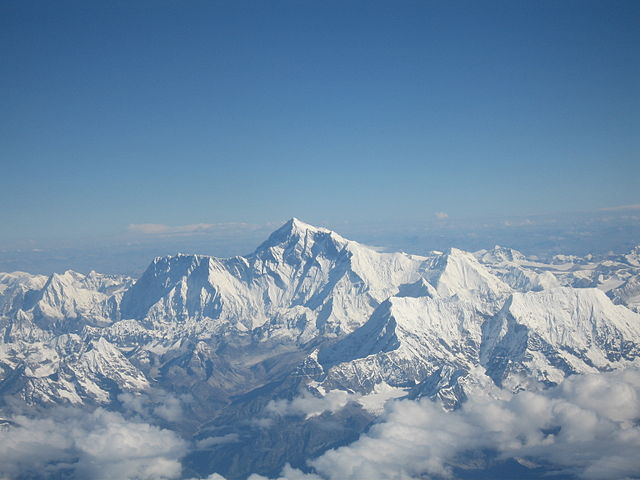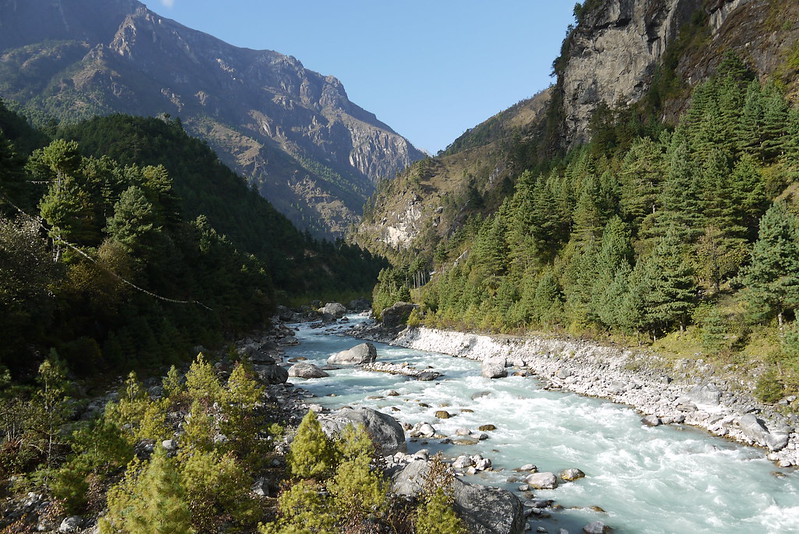 Imagine backpacking to the icy summit of the tallest mountain in the world, Mount Everest - located in the Himalayan mountain region between Nepal and Tibet.
Imagine backpacking to the icy summit of the tallest mountain in the world, Mount Everest - located in the Himalayan mountain region between Nepal and Tibet.
Amidst the dangerous trek to the top, would you believe me if I told you the peak of Mount Everest is slightly taller than it was a year ago?
Mount Everest’s constant growth actually dates back 89,000 years ago when two rivers merged, causing erosion and a movement between the crust and mantle layer of the Earth, known as isostatic rebound.
The Birth of Everest
Let’s travel all the way back to 45 million years ago and understand why Everest is so tall in the first place.
 The origins of Everest began when the tectonic plate where India lies collided with the Eurasian plate. The Indian plate sank below the Eurasian plate, causing the first layer of the Earth, called the crust, to crumple upward. This tectonic maneuver birthed the Himalayas.
The origins of Everest began when the tectonic plate where India lies collided with the Eurasian plate. The Indian plate sank below the Eurasian plate, causing the first layer of the Earth, called the crust, to crumple upward. This tectonic maneuver birthed the Himalayas.
Why is Everest Growing?
Now, let’s fast forward to 89,000 years ago when the Tibetan plateau eroded northward. The Arun River runs in the northern Himalayas, but due to the erosion of the Tibetan plateau, the Arun River merged with the Kosi River system.
The conjoined rivers caused a vast amount of additional water to erode the bedrock. The erosion reduced the weight on the Earth’s crust, uplifting the Himalayas and adding about 50 to 165 feet to the height of Everest! This process of erosion and uplifting the crust of the Earth is called isostatic rebound.
 As a researcher from the University College London put it, an isostatic rebound is like throwing cargo off a ship. The lighter the boat, the easier it floats. The buoyancy of the mantle layer, the layer underneath the crust, pushes the crust of the Himalayas upward. Therefore, the lighter the crust of the Earth, the higher it can float, and the taller Mt. Everest gets.
As a researcher from the University College London put it, an isostatic rebound is like throwing cargo off a ship. The lighter the boat, the easier it floats. The buoyancy of the mantle layer, the layer underneath the crust, pushes the crust of the Himalayas upward. Therefore, the lighter the crust of the Earth, the higher it can float, and the taller Mt. Everest gets.
Over the past 89,000 years, Everest has risen an additional 49 to 164 feet, nearly half a football field! Because the isostatic rebound raises Everest faster than it can erode, Everest gains about 2 mm every year, or the width of a strand of spaghetti.
How Scientists Measured Everest
To figure out how much Everest has grown, Nepali surveyors did the dangerous trek to the top of the mountain in 2019. They placed the GNSS (Global Navigation Satellite System) receiver and antenna at the summit of Everest to acquire satellite data.
The surveyors computed the data from their gravity survey, GNSS survey, and other leveling surveys to calculate the precise height of the top of Mt. Everest. Everest now stands at a whopping 29,032 ft or around 177 Olympic swimming pools!
As cool as isostatic rebound sounds, Everest’s growth spurt won’t last forever. As the Himalayas rise, they will eventually fall like all mountain ranges do. Contrary to popular belief, mountains are always moving, eroding, and growing - another phenomenon of Earth’s natural cycles.
Sources: Guardian, NY Times, BBC, RecordNepal.com






